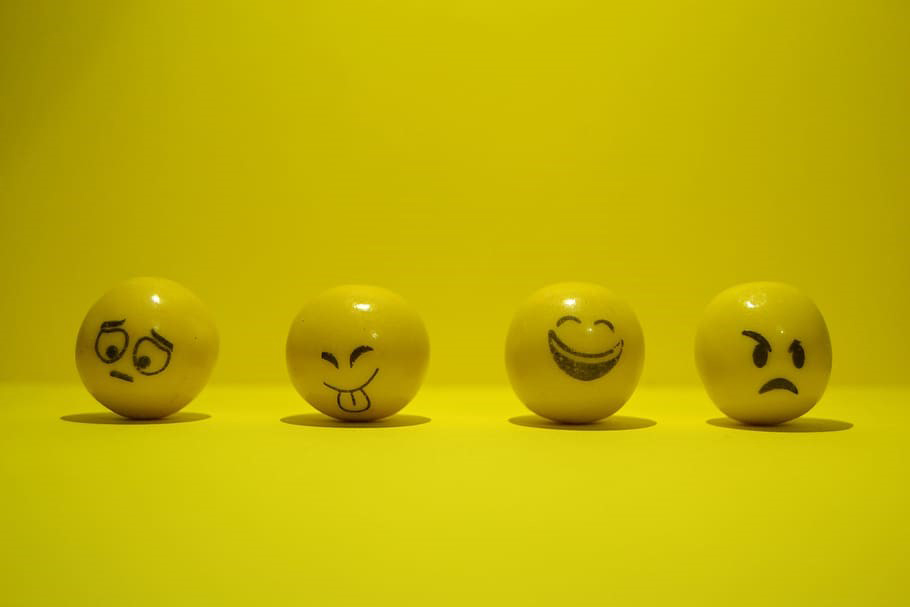
It seems that, in recent years, emotions have taken a leading role in people’s conversations, as concepts such as mental health and emotional management have done. This is not trivial, since all these concepts indisputably go together. In fact, having mental health could be understoog as synonymous of good emotional management. What happens with the popular use of these terms is that they are misused most times, because people do not delve into their meaning.
If we consider necessary learning to manage emotions in order to have good mental health, understanding what emotions are would go first. We cannot manage something we do not know. We will also need to be clear about what it means to manage something, and more specifically emotions.
This topic was already treated on our website, in one of our blog posts: emotions and how to manage them. It explains different strategies to arrange them, so now we just note something very simple: “manage” should not be confused with “delete”. That is, managing emotions should not be confused with eliminating them, which is precisely what many people think. Obviously we would all like not to have unpleasant emotions (such as anxiety, fear or guilt), but as long as we want to eliminate them, we will only increase them, so it is better to manage them. Managing means observing them, seeing what they want to tell us and trying to do something to influence their intensity, their duration and their quality, but never eliminating them. Take a look at the mentioned entry.
What are they and why do we have emotions?
If we understand the answer to these two questions, it will surely be easier for us to understand why we should manage them instead of eliminating them.
Emotions are sensitive experiences that awaken in us instinctively, cannot be avoided and are usually in response to events that happen around us. Those experiences are made up of physical sensations, thoughts, and behaviours. For example, sadness can appear like physical heaviness and crying, thoughts of longing, and the desire to withdraw to be alone. Fear can appear in form of muscle tension, thoughts of danger and make us run away.
No matter how instinctive they are, if they have not disappeared evolutionarily it is surely because they have a function, a function that is still necessary today. What function is that? The function of informing us about our situation and motivating us to act. Each emotion will “inform us about” and “motivate us to ” different things. Let’s look at the functions of basic emotions.
- Fear: Fear is a natural alarm system. It warns us that there is a danger and warns us that we must take protective measures. For example, if fear did not appear when we were in the middle of the road seeing an approaching truck, we might not be driven to run to the sidewalk. Therefore, the emotion of fear fulfils the function of keeping us safe.

- Sadness: sadness can appear on three occasions: when we face the loss of someone important (due to death, breakup, a misunderstanding…), when we fail at something (a job, a project…) or when our life is far from how we want it to be. Sadness has two functions: a social function, in which it makes the rest of us understand that we need support, and an informative and reflective function. It gives us information about how important that loss is and prompts us to withdraw and process the grief or to meditate on how we want to approach life.

- Anxiety: Anxiety, like fear, alerts us to dangers, but in this case, potential ones. That is, it alerts us in advance of these possible dangers, which have not yet occurred. It fulfils the function of preparing us for future problems. For example, being nervous before a class or work presentation prompts us to prepare it carefully.

- Anger: Anger appears on two types of occasions: when we perceive an injustice, either towards ourselves or towards other people, and when we encounter obstacles in our way. For example, discovering that you have bought a defective product and that the car breaks down in the middle of the road, surely makes the vast majority of people angry. In the first case, anger will prompt us to claim a return of the product, and in the second, it will prompt us to find a quick solution. That is, anger fulfils the function of informing us that our limits have been crossed, an injustice has been committed or that we have been harmed in some way. Then, it drives us to show firmness, do justice and seek solutions.

- Guilt/shame: Guilt and shame appear when we do not comply with what is expected. Guilt usually occurs when we go against social norms, and shame when we do not achieve our goals and devalue ourselves for it. Guilt would lead us to rectify the mistake, and shame makes us withdraw to reflect on how we want to do things in the future, to feel better about ourselves. For example, if I forget a friend’s money, guilt will make me apologize and pay him back. If instead of that, what happens is that I cannot return the money, I will think of a way to return it in order to avoid it happens in future times.

- Joy or pleasant emotions: pleasant emotions make us realize what it is valuable in our life: what we enjoy and feel comfortable with. Therefore, it makes us invest efforts in pursuing and maintaining those things. For example, if you like and it feels good to play sports, you probably stick with it. If we didn’t feel joy in some situations, surely we wouldn’t know where to direct our efforts in our lives. These emotions also serve a social function. They are emotions that quickly inform others of our good predisposition and encourage us to share beautiful moments with others.

As you can see, emotions seem to be quite necessary. However, you may think that some of them are very unpleasant. And it is true, but you should know that they are going to be more intense and frequent (that is to say, more unpleasant) the more you try to get rid of them. That is why it is so important to understand that we cannot avoid their appearance, in the same way that we must listen to them, to know what they tell us and what they impel us to do.
Not listening to our emotions is the beginning of emotional mismanagement, bringing consequences of different kinds.
For example, the person who does not set limits when something bothers her/him may end up accumulating anger, making her/him more irritable and defensive in neutral situations. Or if the person who is nervous about a presentation decides not to prepare it because she/he does not feel capable, she/he will probably fail, feel more incapable and more nervous next time.
It may seem very logical and easy, but listening to our emotions can be difficult when we experience them in a very overwhelming way, or when we have been managing them poorly for a long time. In these cases, the help of a general health psychologist can help us analyse them and gradually expose ourselves to them without avoiding them.
If you are interested in the subject and want more material, you can continue with the children’s film “Inside out” (Docter & Del Carmen, 2015). It shows the emotions represented both internally and externally in each character. For both children and adults, it can help us better understand the role of emotions and serve as support for this article.
Guillem Nicolau Coll
General Health Psychologist
Nº col.: B-02773
References:
Docter, P., & Del Carmen, R. (2015). Inside Out. Walt Disney Studios Motion Pictures. Copy citation. Chicago style citation.







